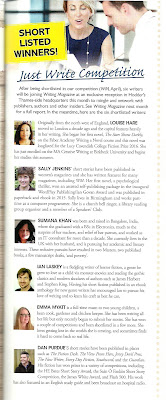(Spoiler alert. Also, a helpful forewarning on sentiment-hurting moments)
For a guy who was so out of the accepted Bollywood star template, Saif Ali Khan has had a very interesting career graph. Back during the embarrassing days of the likes of Tu Khiladi Mai Anari etc., his life span in the film industry looked very short. But everyone underestimated his ability to reinvent and work on himself – if as Sameer in Dil Chahta Hai he proved his bankability, as Langda Tyagi in Omkara he showed his middle finger to all who had written him off as an actor. Reinvention is a constant process – Saif has sort of figured out the formula to break away from the mould and take risks, whilst remaining commercially relevant. Unlike his peers, over the years he has increasingly experimented with greyer roles, and so I had high expectations for Tandav. I admit, I did feel underwhelmed by the end of the first season. (Now, if you want to watch this series to see how much it hurts your sentiments, I've left helpful hints in colour fonts.)
Unfortunately, Tandav immerses itself in all the predictable clichés from the get go – protests; politically woke students (of course the Muslim students are “encountered” or hauled away as terrorists), smarmy and corrupt Dilli police officers, power-hungry politicians...the works. Even so, the first episode held the promise of a tight thriller, what with a dapper Samar Pratap Singh (Saif) bumping off his old man who is also the PM (Tigmanshu Dhulia) so he can ascend the throne. Now, here’s my pet peeve – a premeditated murder is in progress and the perpetrator engages in this soliloquy (presumably for the benefit of the stupid audience) whereby he explains why and how he’s committing the murder. This nonsense really deflates the intensity of a scene and it becomes difficult to take the perpetrator seriously. If you are into crime genre, this is where your sentiments begin to hurt.
Subsequently, like noodles loosening in hot water, the plot unravels – for one, there’s the mysterious guy in a hoodie sitting in front of a bank of monitors (so you know he’s a hacker-type, and therefore your sentiments as crime genre lover are hurt again) who knows the truth about the PM’s death. He gives this information to Samar’s bete noire Anuradha Kishore (Dimple Kapadia) (some unbelievable rummage-the-rubbish bins-for-clues stuff goes on here - cue - hurt sentiments), his father’s lover and party president, in exchange for money. With some nifty blackmailing, Anuradha snatches away the PM’s chair right from under Samar’s impressive nose. After much breaking of decanters and whiskey glasses and chandeliers (hurt sentiments ), Samar decides he is better off as a kingmaker. His target is a particularly angry student, Shiva (Mohammed Zeeshan Ayyub). For some inexplicable reason, Samar feels the only way to bring Shiva under his fold is by bumping off the kid’s “commie” friends – and so by the end of the first season, students are dropping dead like flies sprayed with baygon spray (hurt sentiments ).
Despite the plot resembling a hairball, the series is quite watchable solely because of the actors. I wish they’d gone for more of a slowburn and allowed the characters to develop. It was heartening to see Dimple in a very self-aware, shrewd, power grabber role. This is the beauty of OTT opportunities - regular run-of-the-mill film scripts rarely write roles for older women, except as mother-figures.
As the suave antagonist Saif skulks and prowls, measures his words, modulates his tone, but his role is completely let down with the lack of a character arc – we know Samar is bad news but even 9 episodes later, we really take don’t him seriously. I mean if your only answer to all problems is to bump off people, then it gets rather tedious (hurt sentiments). There are a few understated scenes where Saif’s gaze below an impressive frown burns through, but these are few. We are thrown morsels of insights into Samar’s character, just not enough to make us connect at any emotional level. There is a hint of a complicated partners-in-crime relationship with his wife Ayesha (Sarah-Jane Dias) but again, you couldn’t care. For one, those excellent cheekbones notwithstanding, Sarah’s role is reduced to throwing Ex-Machina stares at everyone (hurt sentiments). You wonder if it’s because she’s hungry or angry or ill…and somewhere in the last episode, you figure it’s probably because of sexual dissatisfaction with the unfaithful Samar…but at this point Ayesha’s character has become irrelevant.
Mohammed Zeeshan plays Shiva’s role to perfection as the naïve idealist student angry at the world. The stage is set for the conflict between Samar and Shiva in subsequent seasons – the older jackal versus the inexperienced cub. If the writers play their cards right and decide to focus on fleshing out the characters rather than episodic twists, Season 2 will be interesting.
Season 1 definitely belongs to one person only – Sunil Grover – he oozes menace and creepiness in his silent and still portrayal of Gurpal, Samar’s Oddjob of sorts.
Even if you don’t enjoy the story itself, Tandav is an easy watch for its top notch production quality. The women are swathed in some utterly gorgeous collection of sarees with perfectly tailored blouses and accessories; there’s Saif’s immaculate kurtas and waistcoats; and there’s Grover’s pretty cool tinted retro glasses.
Coming to the most important question …
Whenever there was a closeup of Saif’s face, I admit my sentiments were (mildly) hurt…as a woman who battles melasma off and on, that glowing skin is too much to tolerate. Also, I was outraged that yet again this is another series with a bevy of thin, fair women. One day those of us with higher BMIs will rise in rebellion…as soon as all the chevda mix in the world is over, I promise.
© Sumana Khan 2021





